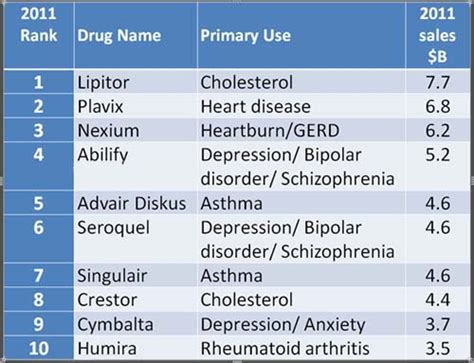Intro
Discover Plavix side effects, including bleeding risks, gastrointestinal issues, and allergic reactions. Learn about common and rare effects, interactions, and warnings to manage your health safely with this blood thinner medication.
The use of Plavix, a medication prescribed to prevent blood clots, has become a staple in the treatment of various cardiovascular conditions. However, like any medication, Plavix comes with its own set of side effects that can range from mild to severe. Understanding these side effects is crucial for patients who are considering or are already taking Plavix. It's essential to weigh the benefits of the medication against the potential risks to make informed decisions about one's health.
Plavix, also known by its generic name clopidogrel, works by preventing platelets in the blood from clumping and forming clots. This mechanism of action is beneficial for patients who have had heart attacks, strokes, or peripheral artery disease, as it reduces the risk of subsequent cardiovascular events. Despite its effectiveness, the medication can cause a variety of side effects, some of which may be bothersome but not serious, while others can be life-threatening and require immediate medical attention.
The importance of understanding Plavix side effects cannot be overstated. By being aware of what to expect, patients can better manage their condition, adhere to their treatment plan, and seek medical help when necessary. Furthermore, knowledge about side effects empowers patients to have more meaningful discussions with their healthcare providers, leading to more personalized and effective care. As we delve into the specifics of Plavix side effects, it's crucial to remember that each individual's response to the medication can vary, and not everyone will experience adverse effects.
Common Plavix Side Effects

Common side effects of Plavix are typically mild and may include itching, rash, or bruising. Some patients may also experience gastrointestinal symptoms such as nausea, vomiting, or diarrhea. These side effects are often temporary and may resolve on their own as the body adjusts to the medication. However, if they persist or worsen, it's essential to consult with a healthcare provider for guidance. In some cases, adjusting the dosage or switching to a different medication may be necessary to alleviate these side effects.
Less Common but Serious Side Effects

While less common, Plavix can also cause more serious side effects that require immediate medical attention. One of the most significant risks associated with Plavix is bleeding. Because the medication prevents blood from clotting, patients taking Plavix may be at a higher risk of bleeding, especially if they are also taking other medications that thin the blood, such as aspirin or warfarin. Signs of bleeding can include easy bruising, bleeding that won't stop, blood in the urine or stools, or vomiting blood. If any of these symptoms occur, patients should seek emergency medical help.
Rare but Potentially Life-Threatening Side Effects

In rare cases, Plavix can cause potentially life-threatening side effects. These include thrombotic thrombocytopenic purpura (TTP), a condition characterized by blood clots forming in small blood vessels throughout the body, and Stevens-Johnson syndrome, a severe skin and mucous membrane disorder. While these conditions are extremely rare, they underscore the importance of closely monitoring patients on Plavix and promptly addressing any unusual symptoms.
Managing Plavix Side Effects

Managing Plavix side effects begins with open communication between patients and their healthcare providers. Patients should be encouraged to report any symptoms they experience, no matter how minor they may seem. By doing so, healthcare providers can assess the severity of the side effects and make informed decisions about whether to adjust the treatment plan. In some cases, lifestyle modifications, such as avoiding activities that increase the risk of bleeding or managing gastrointestinal symptoms through dietary changes, can help mitigate side effects.
Plavix Interactions with Other Medications

Plavix can interact with a variety of other medications, either by enhancing their effects or by increasing the risk of side effects. For example, taking Plavix with aspirin can increase the risk of bleeding, while taking it with certain antidepressants can reduce the effectiveness of Plavix. Understanding these interactions is crucial for minimizing risks and maximizing the benefits of treatment. Patients should always inform their healthcare providers about all the medications they are taking, including over-the-counter drugs and supplements, to ensure safe and effective therapy.
Plavix and Pregnancy

The use of Plavix during pregnancy is a topic of concern due to the potential risks to the fetus. Plavix is classified as a Category B drug, meaning that while animal studies have shown an adverse effect, controlled studies in pregnant women have failed to demonstrate a risk to the fetus. However, because the medication can increase the risk of bleeding, its use during pregnancy, especially in the third trimester, should be approached with caution. Women who are pregnant or planning to become pregnant should discuss the risks and benefits of Plavix with their healthcare provider to make an informed decision.
Alternatives to Plavix

For patients who experience severe side effects or are at a high risk of bleeding, alternatives to Plavix may be considered. These include other antiplatelet medications, such as prasugrel or ticagrelor, which have different mechanisms of action and side effect profiles. The choice of alternative medication depends on the individual patient's condition, medical history, and the specific reasons for considering an alternative to Plavix. Healthcare providers can help patients navigate these options and select the most appropriate treatment based on their unique needs.
Conclusion and Next Steps

In conclusion, while Plavix is an effective medication for preventing blood clots, it's essential to be aware of its potential side effects. By understanding these risks and taking proactive steps to manage them, patients can maximize the benefits of their treatment while minimizing its drawbacks. If you're taking Plavix or considering it as part of your treatment plan, don't hesitate to reach out to your healthcare provider with any questions or concerns. Together, you can navigate the complexities of Plavix therapy and make informed decisions about your health.
To further engage with this topic, we invite readers to share their experiences with Plavix or ask questions in the comments section below. Your insights can help others better understand the medication and its effects, fostering a community of support and knowledge. Additionally, consider sharing this article with friends or family members who may benefit from this information, helping to spread awareness about the importance of medication management and patient education.
What are the most common side effects of Plavix?
+The most common side effects of Plavix include itching, rash, bruising, nausea, vomiting, and diarrhea. These side effects are usually mild and temporary but can vary from person to person.
Can Plavix cause serious bleeding?
+Is Plavix safe to use during pregnancy?
+Plavix is classified as a Category B drug, meaning that while animal studies have shown an adverse effect, controlled studies in pregnant women have failed to demonstrate a risk to the fetus. However, its use during pregnancy, especially in the third trimester, should be approached with caution. Discuss the risks and benefits with your healthcare provider to make an informed decision.
